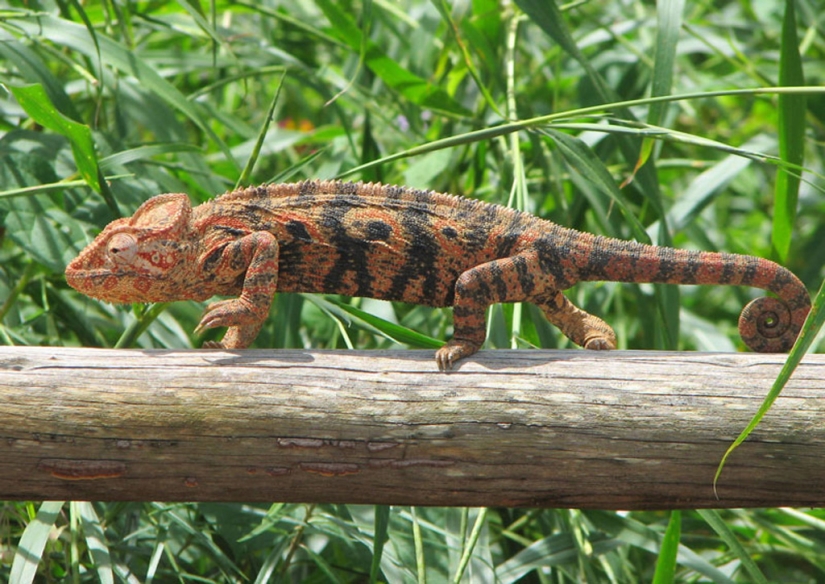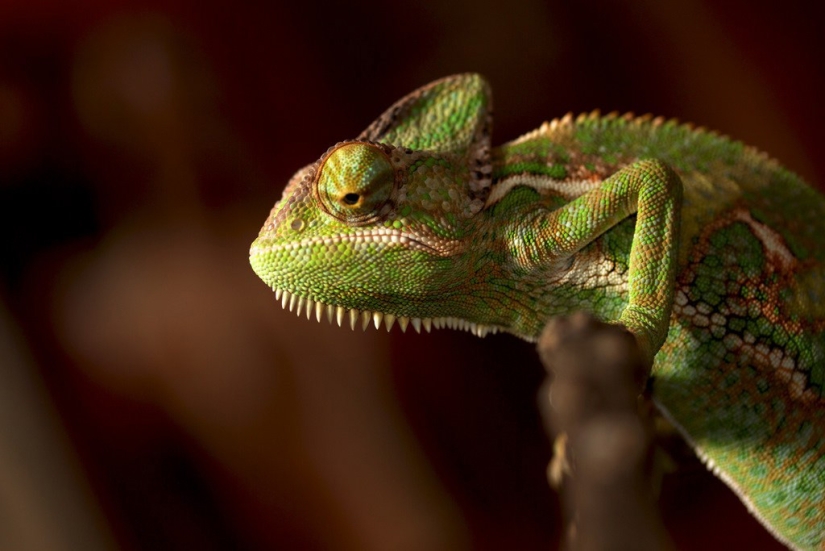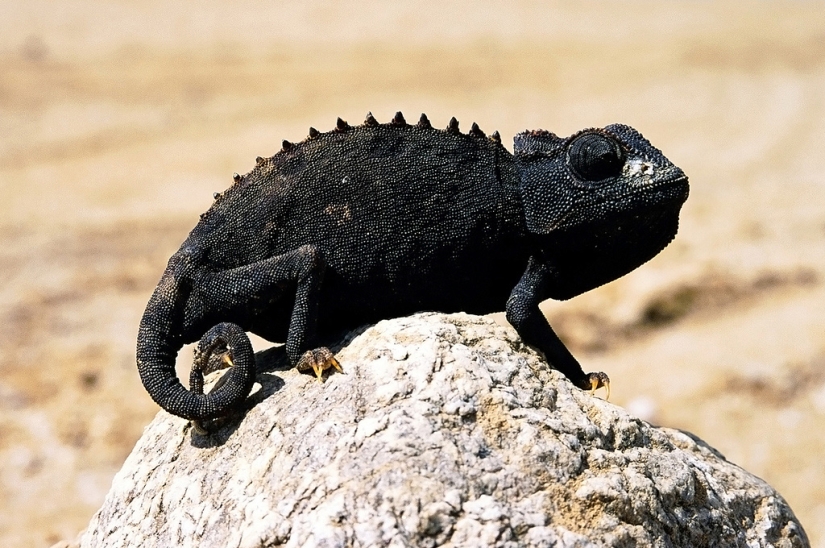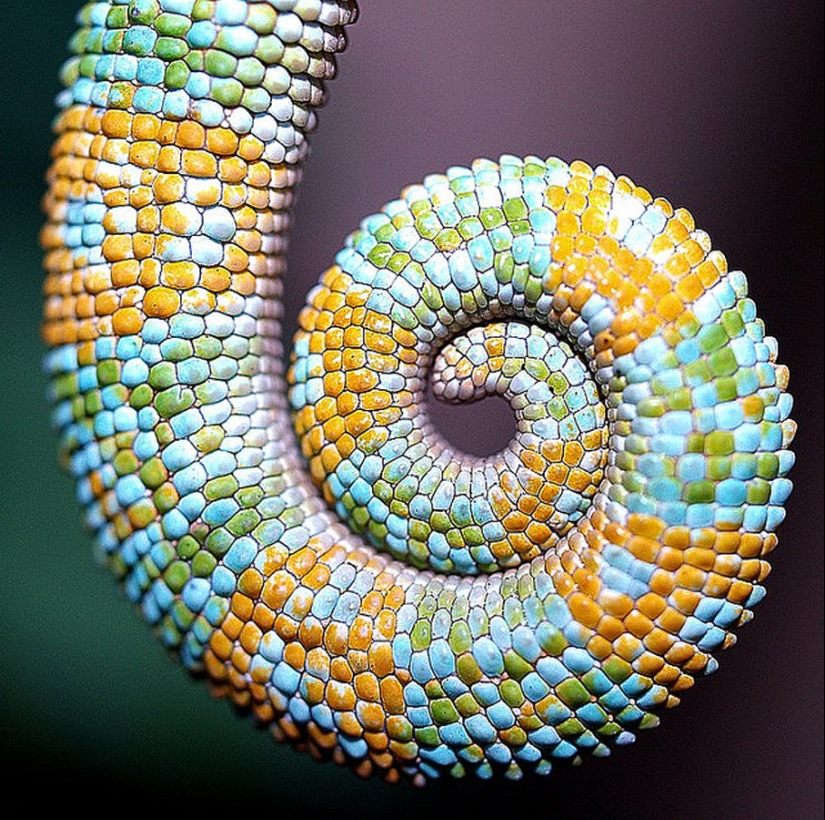Interesting facts about chameleons
Categories: Animals
By Pictolic https://pictolic.com/article/interesting-facts-about-chameleons.htmlAny animal that can change color and look in two directions at the same time is worth learning more about. Armed with its long tongue, the chameleon is arguably one of the most interesting reptiles on our planet. We offer you some interesting facts about chameleons.


Almost half of all chameleon species live in Madagascar, and 59 species are found nowhere else in the world. There are about 160 species of chameleons in the world. They live from Africa to southern Europe, throughout South Asia to Sri Lanka. They were also imported to the USA — to Hawaii, California and Florida.

Most chameleons change color from brown to green and black, but some can become almost any color. The change can happen in less than 20 seconds. Chameleons are born with special cells with color pigment inside. These cells lie in layers under the chameleon's outer skin. They are called chromatophores. The upper layer of the chromatophore has a red or yellow pigment, the lower one is blue or white.

When these cells change, the chameleon's skin color also changes. Chromatophores change by receiving a signal from the brain. This signal "tells" the cells to expand or contract. Because of this, the pigments mix like paint. A chemical called melanin also helps chameleon change color. Melanin fibers can spread like a spider web through layers of pigment cells, and their presence causes the skin to darken.

Many people think that chameleons change color to blend in with the background. Studies have shown that mood, light and temperature make the chameleon change its color. Sometimes a change of color can "calm down" a chameleon, and sometimes it helps individuals to communicate with each other.

Chameleon eyes can see in two directions at the same time. Their upper and lower eyelids are connected, leaving only a slit through which the chameleon sees.

They can rotate and focus independently of each other and see different objects at the same time. This gives them a 360 degree view around their body. Upon detecting prey, the eyes can be focused in one direction, providing an acute stereoscopic view and depth of perception. Chameleons have very good eyesight for reptiles, which allows them to see small insects from a long distance (5-10 m).

Chameleons vary in size and body structure. The maximum length is from 15 mm in the male of the species Brookesia micra to 68.5 cm in the male of the species Furcifer oustaleti.

Chameleons feed with a ballistic long tongue that shoots out of their mouth to catch prey.

Although it is generally accepted that the length of the chameleon's tongue is 1.5—2 times longer than its body, it has recently been proven that smaller chameleons have a larger tongue than their larger counterparts.

The tongue shoots very quickly, grabbing prey in 0.07 seconds. The tip of the chameleon's tongue is a lump of muscle. When it reaches prey, it forms a small sucker.

Chameleon paws are well adapted for climbing branches. There are five distinct toes on each foot, assembled into a flat section of 2 or 3 fingers, which makes their paws look like forceps.

There are two fingers on the front paws in the outer group, and three on the inner. On the hind leg, it's the opposite. With the help of such paws, the chameleon can firmly grasp narrow or rigid branches. Each finger is equipped with a sharp claw that helps to grasp surfaces when climbing.

Males are more "decorated". Many have ornaments on their heads and faces, such as nasal appendages or horny protrusions. Others may have large crests on their heads.

Chameleons are hard of hearing. Like snakes, chameleons do not have outer or middle ears.

However, this does not mean that chameleons are deaf.

They can detect sound at a frequency in the range of 200-600 Hz.

Chameleons can see in both normal and ultraviolet light.

In ultraviolet, chameleons become more sociable and active and like to bask in the sun and eat.

In this light, they are also more ready to reproduce, because it has a positive effect on their epiphysis.

The American chameleon is not really a chameleon. It is a small lizard from the iguana family.

She lives in the USA and is famous for her color changes.
Recent articles

Gerard Uferas is one of the most renowned and vibrant contemporary French photographers. His talent is multifaceted, but Uferas is ...

In 1969, a healthy food restaurant opened on the Sunset Strip in Los Angeles-one of the first in the country, and possibly in the ...

Colin and Kristin Poole are an amazing creative family. Colin is a world-renowned artist, and his wife Kristin is a wonderful ...